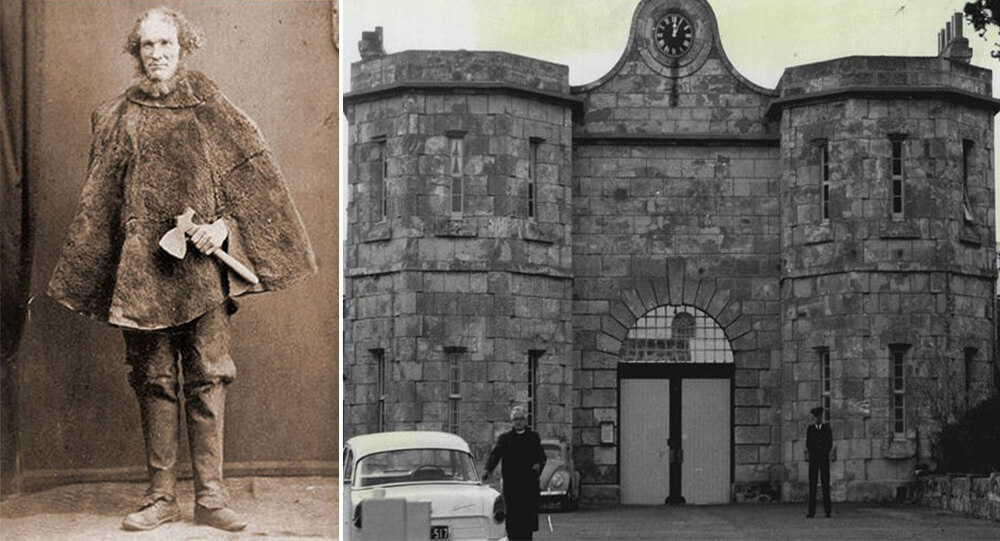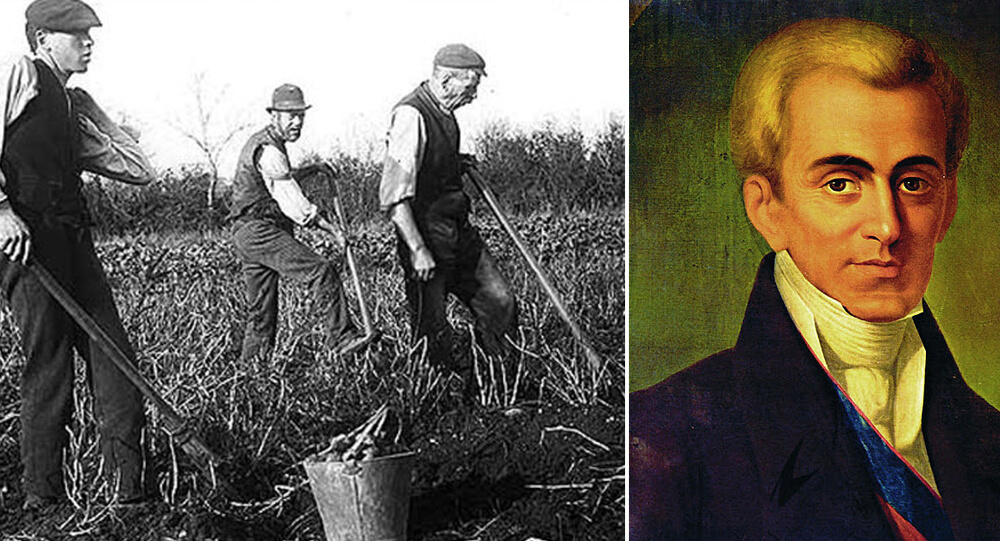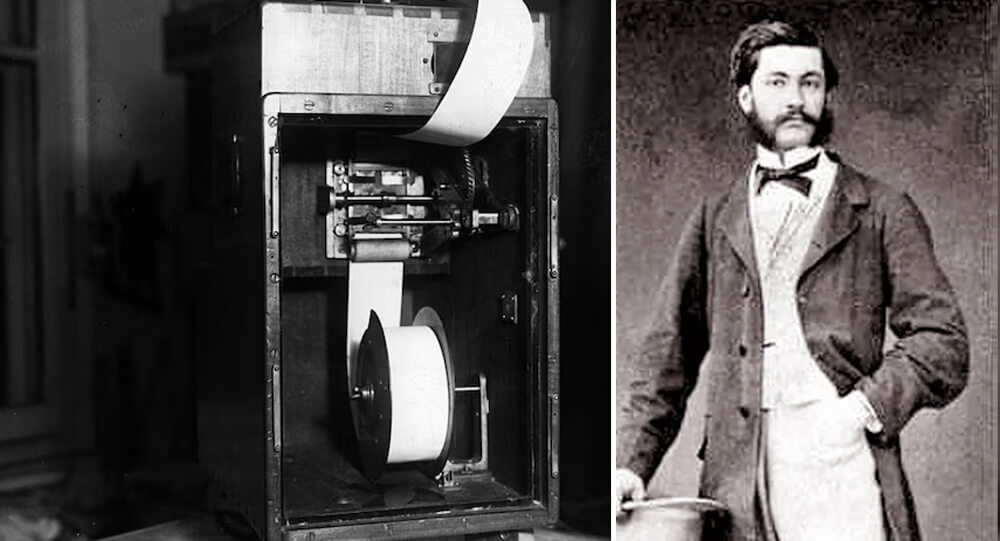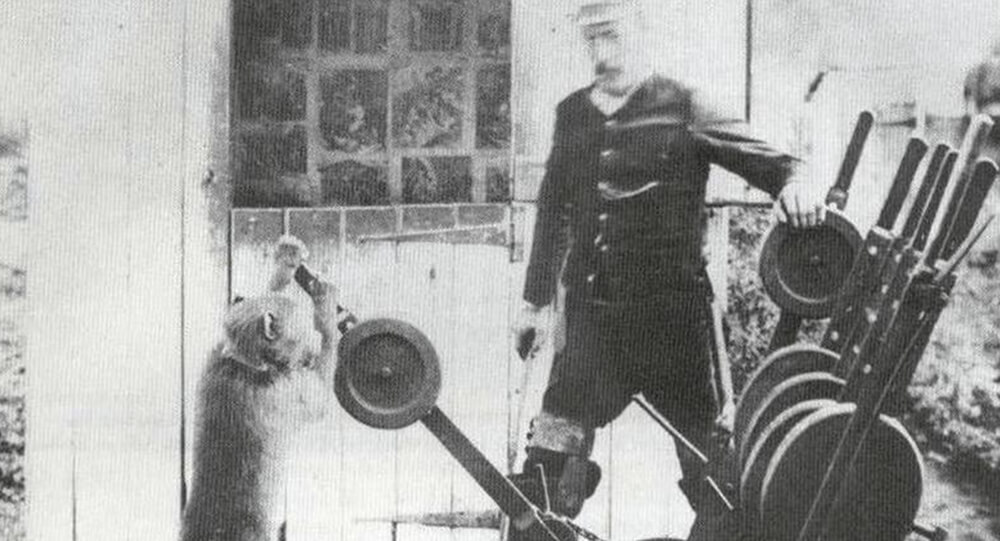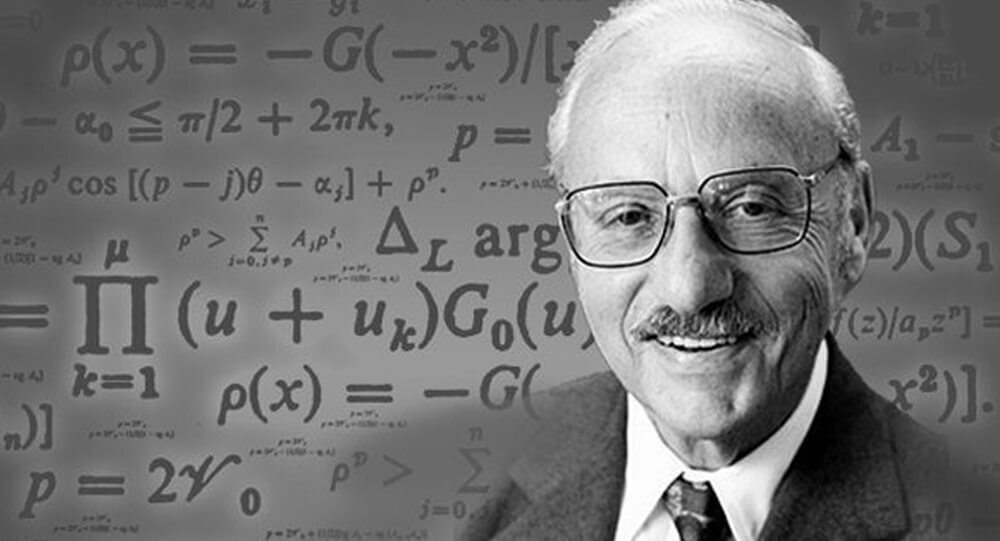

George Dantzig solved two famous “unsolved” problems in statistics mistakenly as assignment
The fields of mathematics and statistics are frequently rife with puzzling issues that need to be resolved. Two such issues arose in the middle of the 20th century: one in maximum likelihood estimation and the other in linear programming. Nobody anticipated that a young graduate student named George Dantzig would accidentally discover the answers to these supposedly intractable puzzles. Dantzig mistook these issues for simple assignments, which is what makes this story so remarkable. He not only overcame these difficulties thanks to a lucky break, but he also completely changed operations research and statistics. Join us as we delve into the tale of George Dantzig’s accidental triumph, exploring the nature of the problems, the circumstances of his discovery, and the lasting impact of his contributions to mathematics and statistics.
The Story of George Dantzig and His Remarkable Achievement
Mathematician and economist George Dantzig possessed a remarkable talent for finding solutions to challenging issues. Dantzig, who was born in 1914, got his start in mathematics at a young age. He was quickly recognized for his exceptional talent in the academic community, which inspired him to pursue a PhD in mathematics at the University of California, Berkeley.
There were two issues in the field of statistics that had baffled and confounded mathematicians for a long time. The first issue involved linear programming, a method for allocating scarce resources as efficiently as possible. In the second issue, also referred to as the shortest path problem, the goal was to identify the most effective path between any two points in a network. These issues remained unsolved despite the best efforts of renowned mathematicians, leaving an unfulfilled curiosity in the field.
The Case of the Two Unsolved Statistical Problems
Statistics’ unsolved issues weren’t easy to solve. They needed creative problem solving, intricate algorithms, and a solid foundation in mathematical theory. Numerous methods had been tried by mathematicians, but no conclusive answer could be found. These puzzles were true tests of mathematical prowess because they required both creativity and technical skill.
Statistics as a field has been significantly impacted by the unanswered questions. They hindered advancement in related fields and represented knowledge gaps. The inability to solve these puzzles hindered developments in a number of fields, including resource optimization, network planning, and other areas that relied on these fundamental ideas. With each passing year, the burden of these unanswered questions increased, making mathematicians impatient for a solution.
Mistakenly as Assignment: How Dantzig Stumbled upon the Solutions
The greatest discoveries occasionally occur by chance. In George Dantzig’s case, an unexpected turn of events led him to the answers to these infamous unsolved puzzles. He had no idea that a straightforward error would result in a game-changing statistical discovery.
Dantzig was late for a statistics class at the University of California, Berkeley in the year 1939. He diligently completed the problems listed on the board for homework without realizing they were examples of unsolved problems. Dantzig didn’t comprehend the gravity of his error until several days later. But instead of feeling embarrassed, he saw a chance to show off his problem-solving abilities.
The First Problem: Linear Programming and the Simplex Method
Dantzig’s unintentional solution to the first issue involved linear programming. In linear programming, a linear objective function is optimized while a set of linear constraints are met. This method is used in a variety of industries, including manufacturing, logistics, and financial planning.
The invention of the simplex method made it possible for Dantzig to solve the linear programming issue. The simplex method is an algorithm that methodically investigates workable solutions in search of the best one. This ground-breaking approach transformed the
And with that, two infamous unsolved problems were resolved as a result of George Dantzig’s erroneous approach to his statistics homework. His remarkable achievement not only showcased his brilliance but also reminded the scientific community that sometimes, a fresh perspective and touch of accidental discovery can unlock the secrets of longstanding puzzles.
Application and Significance of the Solution: Transforming Operations Research
Brilliant mathematician George Dantzig unknowingly released a ground-breaking solution that revolutionized the field of operations research. His method for resolving linear programming issues has been widely used in a variety of fields, including manufacturing, finance, transportation, and even routine decision-making. Dantzig’s solution is still useful across many industries, helping to maximize profits and optimize supply chains.
Dantzig’s unintended victory not only resolved a critical statistical issue but also completely transformed the field of operations research. His algorithm paved the way for additional developments and provided researchers with the confidence they needed to take on challenging optimization problems. It is impossible to overstate the significance of his contributions to operations research, which have helped businesses and organizations make better decisions, increase productivity, and ultimately achieve their objectives more successfully.
The Second Problem: The Riddle of Maximum Likelihood Estimation
Let’s examine the second well-known issue George Dantzig unknowingly resolved, maximum likelihood estimation (MLE), just when you thought his unintentional success couldn’t possibly be any more astounding. The MLE statistical method is used to determine which statistical model’s parameters best fit the observed data. The name refers to the process of determining the values that maximize the probability that the observed data will occur.
In statistics, resolving the maximum likelihood estimation problem is crucial. It enables researchers to calculate unknown parameters, generate accurate forecasts, and derive significant findings from data. Numerous disciplines, including biology, economics, engineering, and social sciences, use MLE extensively. Dantzig’s unintentional solution to this issue gave researchers a strong tool for deriving insightful conclusions from data and developing statistics.
Impact and Legacy: Dantzig’s Contributions to Statistics and Mathematics
It was widely publicized when George Dantzig accidentally solved two well-known “unsolved” statistical puzzles. The significance of his accomplishments was made clear once his mistakes were found, which led to broad acclaim and validation from the academic community. Throughout his career, he was given a great deal of recognition, including the National Medal of Science and election to the National Academy of Sciences. The recognition of Dantzig’s contributions cemented his standing in the history of mathematics and statistics.
The statistics and mathematical communities are still feeling the effects of George Dantzig’s unintentional solutions. His algorithms have established themselves as essential resources in these disciplines, giving academics and professionals strong tools for handling optimization and estimation issues. Dantzig’s work has inspired countless individuals to pursue careers in mathematics and statistics, reminding us of the lasting impact one person’s accidental triumph can have on an entire discipline.

Remembering the miracles of the 1985 Mexico earthquake (unbelievable stories)
In 1985, after an 8.0 magnitude earthquake hit Mexico City, nearly all newborn babies survived a collapsed hospital. They are known as “Miracle Babies” for surviving 7 days without nourishment, water, warmth or human contact.

Moondyne Joe: The story of Australia's most notorious prison escapee
A man named Joseph Bolitho Johns (A.K.A Moondyne Joe) broke out of Australian prisons so many times that the police were compelled to build a special cell just for him. He escaped from that as well.

The 1976 April Fools' Pranks, Planetary Alignment
On April fool's Day, 1976, the BBC convinced many listeners that a special alignment of the planets would temporarily decrease gravity on Earth. Phone lines were flooded with callers who claimed they felt the effects.

How Greek prime minister in 1830’s tried to spread the potato in Greece
A Greek prime minister in 1830’s tried to spread the potato in Greece but people weren’t interested so he put armed guards in front of shipments of potatoes so people would think they were important. People later started stealing these potatoes a lot which spread the crop to all of Greece.

Nordlingen, The Town Inside A Meteorite Crater With Millions Of Meteorite Diamonds
The German town of Nördlingen is embedded with 72,000 tons of microscopic diamonds. About 15 million years ago, a meteorite hit this region, and the impact created a massive depression and formed rocks containing diamonds, glass, and crystals. The town was built in the impact crater sometime around 898 CE.

How European Rabbits Took over Australia
In 1859, wealthy settler Thomas Austin released 13 wild rabbits on his Australian estate. By 1920, their population grew to 10 billion.

3 men lived on top of a billboard in tents for almost 9 months
From 1982-1983, three men in Allentown PA competed in a radio contest in which they lived on top of a billboard in tents. Whoever stayed up longest would win a house. Due to economic pressure from the recession, none of the contestants wanted to give up, so the contest lasted almost 9 months.

How Dmitri Mendeleev Developed the periodic table of the elements
1850 Dmitri Mendeleev walked almost a thousand miles to Moscow so he could apply for the University of Moscow. Although he was not accepted, he walked to St. Petersburg where he was accepted, And with that education, he developed the the periodic table of the elements

How did Howard Florey discover penicillin
Penicillin was discovered by Alexander Fleming, but he never attempted to turn it into an antibiotic. It wasn't until ten years later that Howard Florey discovered Fleming's obscure paper and understood the mold's potential. Up to 200 million lives may have been saved as a result of Florey's work.

Franz Ferdinand’s Assassination that sparked World War I
Archduke Franz Ferdinand of Austria and his wife Sophie are shot to death by a Bosnian Serb nationalist during an official visit to the Bosnian capital of Sarajevo on June 28, 1914. The killings sparked a chain of events that led to the eruption of World War I by early August.

The Arabia Steamboat: Unearthing a 19th Century Time Capsule from the Missouri River
The Arabia was a steamboat that sank in the Missouri River in 1856. Over time, the river shifted 800 meters to the east, eventually turning the site of the sinking into a field. The steamboat remained under 45 feet of slit and topsoil until 1988, when it was excavated. The mud, as it turned out, was such a great preserver that most of the artifacts on board were found to be intact. They even found jars of preserved apples that were still edible!

Titanoboa cerrejonensis, fossils of the world’s largest species of snake
In 2009 in a coal mine of Columbia, scientists discovered fossils of the world’s largest species of snake. The species is called “Titanoboa cerrejonensis,“and it is from around 60 million years ago. It would have had measured about 48 feet long and weighed about 2,500 pounds

Louis Le Prince Invented the motion picture camera, and then he mysteriously disappeared
Louis Le Prince, the inventor of motion pictures, vanished without a trace in 1890. Thomas Edison quickly claimed the title of "first and sole inventor of cinema," even taking Le Prince's son to court to dispute it. A few years later, the son also dies under mysterious circumstances.

Top 10 Greatest and shocking Archaeological Discoveries of All Time
While we're all locked at home, there's no better way to escape to another time and place than to learn about amazing archeological sites and discoveries from around the world. Here are the 10 greatest and shocking archaeological discoveries —and don't be shocked if they inspire future trip plans whenever it's safe to do so again.

Juliane Koepcke: The Teenager Who Fell 10,000 Feet And Trekked The Jungle to survive
In 1971, a high school student was sucked out of an airplane after it was struck by lightning. She fell 10,000 feet to the ground while still strapped to her chair and survived. Only to endure a 9-day trek to the nearest civilization.

The World’s First Seismograph: How Ancient China Detected Earthquakes 1,800 Years Ago
Over 1,800 years ago, long before modern technology, the ancient Chinese astronomer and inventor Zhang Heng created the world’s first seismograph in 132 AD. This ingenious bronze device could detect distant earthquakes by releasing small balls from dragons’ mouths into toads’ mouths—each indicating a different compass direction. Its historic detection of an earthquake 400 miles away astonished the imperial court and transformed the way societies understood and responded to seismic events.

how Ferris wheel invented
In 1891, Chicago challenged engineers to create a structure to surpass the Eiffel Tower for the World's Columbian Exposition. George Washington Gale Ferris jr. responded with the original Ferris Wheel, a giant rotating structure elevating visitors above the city. This invention became an iconic attraction at the fair.

Atomic Tourism: In the 1950s, nuclear tests in Las Vegas served as a draw for tourists
Between 1950 and 1960, Las Vegas offered “Atomic Tourism” in which guests could watch atomic bombs being tested in the desert as a form of entertainment.

The Assassination Of King Alexander
The assassination of King Alexander of Yugoslavia marked a pivotal moment in the country's history. This article delves into the rise and reign of King Alexander, exploring his early life and ascension to the throne. It also examines the political and social climate in interwar Yugoslavia, setting the stage for the tensions and challenges that ultimately culminated in his tragic assassination. By understanding the context in which this event unfolded, we can better grasp the significance and impact it had on the nation and its future.

Philippines, the largest supplier of Nurses in the World
Philippines is the world’s largest supplier of nurses, supplying roughly 25% of all overseas nurses worldwide.

The touching story of David Vetter (bubble boy), the 'boy who lived in a bubble
David Vetter lived his whole 12 years in sterile “bubble”. He was “outside” for 20 second after being removed from his mother’s womb. He never touched any human.

The Tragic Story Of Mary Ann Bevan, The ‘Ugliest Woman In The World’
After the death of her husband, Mary Ann Bevan had no income to support herself and her children. She then decided to enter a contest where she won the title of “ugliest woman” and was later hired by a circus. She endured this ridicule from the world to provide for her family.

The Littlest Skyscraper: How J.D. McMahon’s 480-Inch Con Fooled Investors in 1919
In 1919, J.D. McMahon convinced investors to fund a 480-foot skyscraper, but he labeled the plans as 480 inches, building a 40-foot structure instead. After taking $200,000, he won in court since the plans matched what he built.

Jack the Baboon operated a railroad, earned a living, and never made a mistake
A baboon worked as a signalman for the railroad in the late 1800s. He never made a mistake and worked for the railroad until the day he died.

Saudi Arabia camel carvings dated to prehistoric era
Archaeologists were shocked to discover that a series of camels carved into desert rock faces in north-western Saudi Arabia are actually prehistoric, dating from 7,000-8,000 years ago - before either the Pyramids of Giza or Stonehenge were built.

